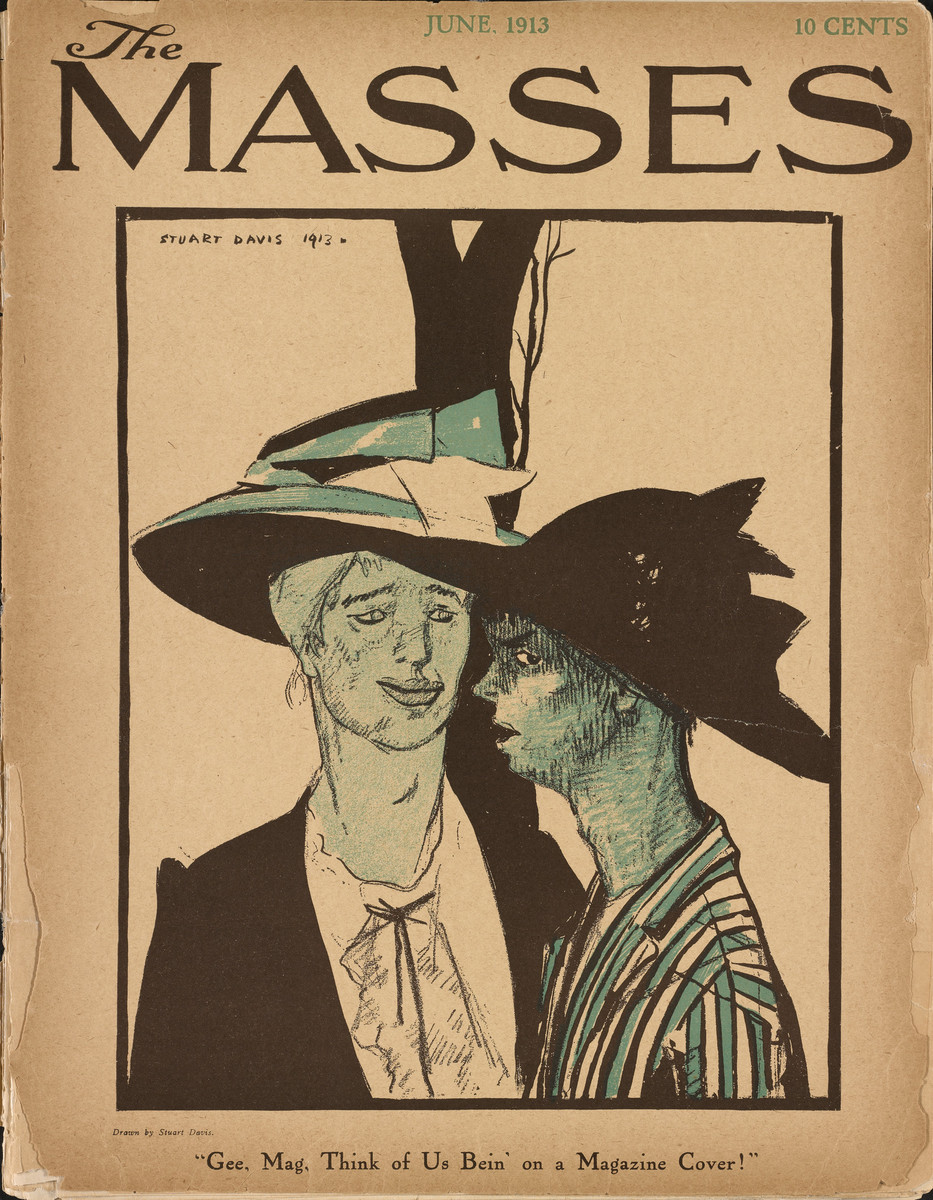Gee, Mag

Davis, Stuart. “Gee, Mag.” The Masses (Vol. 4, No. 9): Cover. New York: The Masses Publishing Co., 1913.
In his June 1913 illustration, artist Stuart Davis opts to feature an unlikely pair of women on the cover of The Masses. Traditionally, periodicals of this historical moment deployed images of attractive, feminine, privileged women in their cartoons, ads, and illustrations (Patterson 3). Davis’s intriguing duo challenges this stylistic trend. As members of the working class, the two women inhabit a social sphere outside of bourgeois parlor culture, and the cover thus playfully questions where images of working-class women belong. The dominant design elements of the illustration—found in the stripes of the various textiles and the dramatic contours of their hats—draws attention to the pair’s sartorial choices. The visual rhythm created in the patterns and silhouettes of the women’s fashion reinforces this compositional emphasis, which suggests that although this pair’s presence on a magazine cover is unexpected, they, like traditional cover girls, are also interested in physical appearance and dress. The cool blues found on their clothing, faces, and hats further contribute to the artist’s attempt at conveying the untried and unfamiliar.
Central to the humor of the illustration is its caption. Casting a sidelong and self-conscious glance at the reader, the woman on the right observes to her friend, “Gee, Mag, Think of Us Bein’ on a Magazine Cover!” As Rachel Schreiber describes in her study of The Masses, coming up with the caption for this particular cartoon was a collaborative process for staffers at the magazine. Davis had brought his illustration of two working-class, New Jersey women to an editorial meeting without a caption, and it was John Sloan who suggested the final “Gee, Mag…” line (8). Other artists at The Masses were baffled at its appearance as a cover image and echoed the bewilderment of Davis’s subjects. One cartoonist objected that the illustration and its subjects were “‘too ugly to print’” (qtd. in Schreiber 8). That their physical appearance created such a divided response hints at the broader policing of female bodies and the anxiety created when print culture featured figures like Mag and her friend as models for femininity.
Moreover, as a socialist magazine, The Masses also uses the image of two proletariat women to contribute to the periodical’s overarching political discourse. Thus, though the cover offers a compelling alternative to traditional cover girls, the working-class women it showcases become merely social types in the magazine’s larger political agenda to challenge any norm perceived as capitalist or bourgeois. The cover therefore stands as a visually striking testament to print culture’s free appropriation of images of women for a kind of political and social activism from which they were simultaneously excluded.
Sources
Patterson, Martha. The American New Woman Revisited: A Reader, 1894-1930. New Brunswick, NJ: Rutgers UP, 2008. Print.
Schreiber, Rachel. Gender and Activism in a Little Magazine: The Modern Figures of The Masses. Burlington, VT: Ashgate Publishing, 2011. Print.